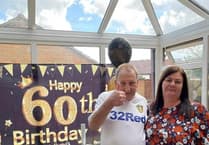Following instruction from Lambeth Palace immediately after the Queen’s death, the bells at St Mary’s Church, Ross-on-Wye were fully muffled on both sides apart from the tenor bell, which was muffled just on one side.
This is a practice only done for the death of a monarch; the resulting sound was a muted mournful ring of bells with a tolling bottom note.
The bells were rung at 12 noon on September 9, the day following announcement of her death. They were rung again on the morning of September 19 from 10am to 11am to coincide with ringing across the country, immediately before the funeral of HM Queen Elizabeth II.
Bell-ringer Elizabeth Walker told the Gazette: “It’s an ancient hobby, going back centuries, but at the same time a service you do for the church.”
Bells are rung for church services, weddings, and special occasions. At the time of HM Queen Elizabeth II’s passing, messages cascaded from the top explaining protocol and procedure for bell-ringers.
Ross has eight bells, which are rung for Sunday service and practice on Tuesday evenings. The Tuesday practice helps improve their skills as well as provide an opportunity to teach new learners.
Elizabeth started bell-ringing in her teens and is still doing so decades later. She said: “I can’t think of any other hobby that’s been unchanged for centuries and where your musical instrument is also centuries old.”
There are several bell ringing protocols which are abided. On Remembrance Sunday the clapper—the small object inside the bell that hits against the bell to make it ring—is sheathed with leather on one side to soften half of the rings. Only for the death of a monarch are both sides of the clappers sheathed, apart from the tenor bell. Those who’s like to get involved can get in touch with Elizabeth at [email protected].




